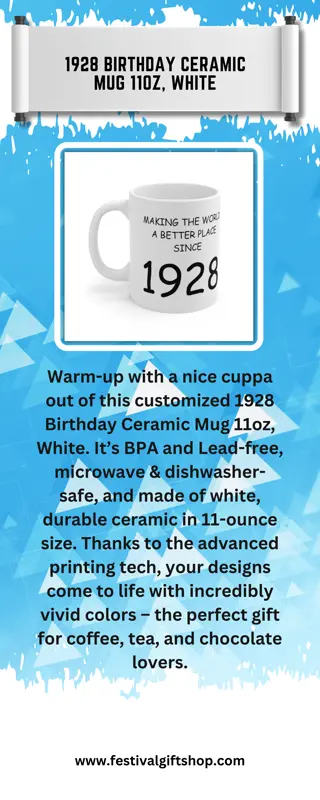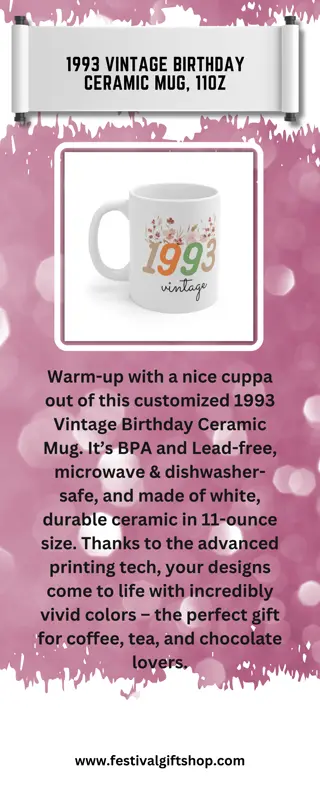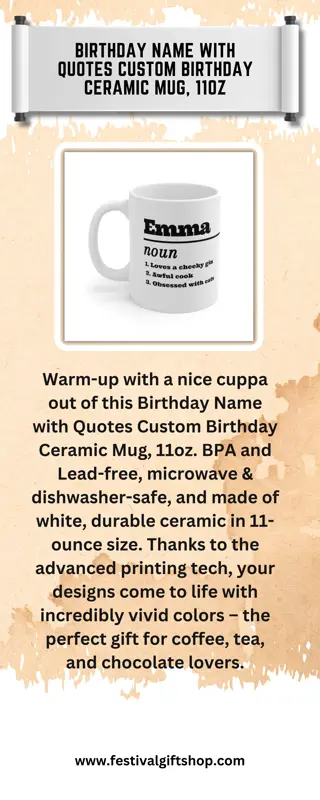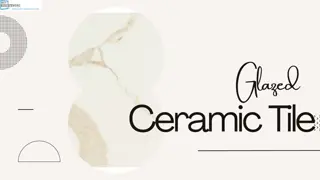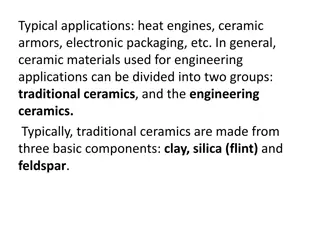Ceramic Slip Decorating Techniques and Artists
Slip decoration is a versatile technique in ceramics, offering various methods such as slip trailing, sgraffito, and Mishima. Artists like Ayumi Horie and Heesoo Lee showcase the beauty and creativity achievable through slip decoration in pottery.
Download Presentation

Please find below an Image/Link to download the presentation.
The content on the website is provided AS IS for your information and personal use only. It may not be sold, licensed, or shared on other websites without obtaining consent from the author. Download presentation by click this link. If you encounter any issues during the download, it is possible that the publisher has removed the file from their server.
E N D
Presentation Transcript
Using slip to decorate Ceramic work This is done while clay is in the greenware stage
https://www.youtube.com/watch?v=V_x2v00TUIY Slip is an essential tool in ceramics with many different functions. There are many interesting and diverse pottery decorating techniques involving the use of slips. Effects range from linear to textural, and from very fluid to hard-edged. Slip is the best to use when clay still has some moisture, otherwise known as leather hard. Slip dries very quickly so it is best to work fast, it can also help to plan your designs ahead of time.
Slip trailing Slip trailing is one of the most widely known and used methods of decorating with slip. Slip trailing delivers a stream of slip to damp or leather-hard clay through some type of dispenser. This dispenser can be a large syringe such as a baster, or a bottle with a nozzle such as a bottle used for condiments or glue. In either case, the dispenser's opening must be wide enough so that it won't clog. In addition, the slip used consist of fairly fine particles in order to reduce clogging. https://www.studiokotokoto.com/wp-content/uploads/2015/11/slip-trailing.jpg
Sgraffito Sgraffito begins by applying a coating of a contrasting colored slip to the damp or leather- hard clay. The slip and clay are then allowed to stiffen until both are leather-hard. At that point, designs or patterns are incised or carved down through the slip into the clay body beneath. The designs are enhanced due to the contrast between the color and tonal qualities of the slip and clay. The character of the lines and carving will be affected by the tools used and the dryness of the slip and clay when the incising is done.
Ayumi Horie Is a contemporary ceramic artist working with sgraffito. Based in Portland, Maine, Ayumi Horie believes that the best handmade pottery encourages connections between people and make daily life better. Her activism and advocacy promote thoughtful craft practice and support for makers around the world. www.Ayumihorie.com
Mishima First, the leather-hard clay is incised in the desired pattern. Contrasting slip is then applied to and forced into the incised design. Slip will need to overflow the incised designs, as the slip will shrink somewhat as it dries. After the slip has stiffened, the entire area is scraped flush to the original surface level. This reveals the original clay body and the slip which remains embedded in the incised design.
Heesoo Lees Work explores the vulnerability of the human condition through the metaphor of the natural world. She works mostly with inlaying various underglazes and slips that react with one another while firing. https://www.heesooceramics.com/
Marbling Slip After trailing slip over damp or leather-hard clay, the slip trails can be modified by turning or shaking the piece of pottery, or combing through the slips. The effects achieved will depend on the method of modifying the slip, and on how fluid the slip is. If you do use a very liquid slip, be aware that you will need to carefully control the piece's drying time. Slow drying and ensuring there is air flow all around each side of the piece will greatly lessen the possibility of warping or cracking.
Feather Combing This technique begins by applying bands of contrasting slip onto damp or leather-hard clay. After the bands have been widen and are adjacent to and touching each other, a soft, flexible and sharply pointed tool is drawn through the slip to produce a pattern. It is likely that the traditional tool was the flexible end of a feather, giving this technique its name. Feather combing can take quite a bit of practice to master.
Slips and Brush decorating When decorating pottery, slips can be applied to greenware using brushes. Brushing slip onto pots is one of the oldest methods of delivering slips to a pottery surface. The brushed decoration can range from very delicate lines done with fluid, fine-particle slip, to an overall layer of heavy slip applied with wide brushes. This can also be considered slip painting, where the artist would create a clear image on the clay s surface.
Slips and Resists Slips can be used with resists in order to decorate pottery. In this technique, slip is brushed onto damp or leather-hard clay after a resist of some form has been applied. The resist is placed in areas which are to remain slip-free. Paper resists can also be made and are considered to be a stencil. The paper can be moistened slightly and applied to leather-hard clay. Once the paper is applied to the clay, the slip is brushed on. The paper is then carefully lifted away once the slip has stiffened. This technique can produce hard edges and intricate patterns.
Textured Slip Slips can have inclusions added such as grog or sand. They can also simply include clumps of the same clay in order to make textured decorative effects. Textured slips can be applied in small, specific areas. They can be dripped or trailed using a brush. The large particles will clog nozzles or syringe tips.
Slip Project Choose one or two of these slip techniques and create a minimum of one piece. More than one piece can be made exploring multiple techniques or expanding on one technique through multiple pieces. You have your choice of Red or White clay for the construction or the slip. So if you want to build with Red, you will use White slip and if you want to build with White, you will use Red slip. The piece(s) can be sculptural and/ or functional. Sketches, ideas and image collection in your sketchbook. 5 day project



